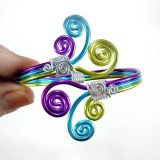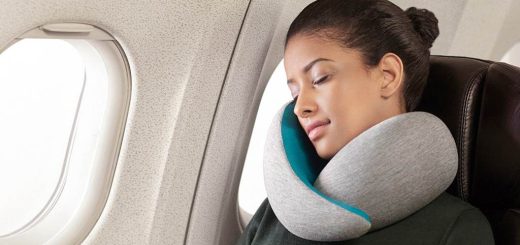Are fat bikes just for winter?
Fat bikes were once thought of as just winter bikes, and for a good reason. With the exception of e-bikes, fat bikes were one of the first items to disappear from outdoor retailers’ shelves in favor of the more popular XC, these best bmx bikes for beginners and trail bikes. However, with the popularity of fat biking skyrocketing over the past few years, this traditional perception has begun to change.

Are fat bikes just for winter?
Maybe not. The advantages of fat biking in all seasons are becoming more apparent as the summer months draw near. Returning riders often uncover this misconception during the winter months, stating that they won’t use their fat biking gear because of how heavy and cumbersome it is. But without quality tires, frames, or rims (and after a few crashes – ouch), these bikes quickly lose their purpose.
Tips for Riding a Fat Bike
Use the right gear
Fat bikes need specialized fat bike-specific tires and rims. Riding on drop handlebar-mounted flats may sound like a better option, but in reality, most riders find that these aren’t nearly as efficient as knobby tire options.
Abuse & Overuse
One of the biggest benefits of fat biking is that it gives you more traction when switchbacking or negotiating technical terrain than traditional mountain bikes equipped with soft rubber soles. However, once you start running out of rubber upfront for the large knobs that are required to prevent flats, it’s easy to run into problems in the rear area when performing duties like braking and cornering.
Use flat pedals
Try as we might, flat pedal flats just can’t deliver the same braking power that knobby rubber tires offer. Use high-volume (inner and outer) tubes on your fat bike. If possible, it’s a good idea to run at least two sets of inner & outer tubes where only one set will help when low-pressure conditions are encountered.
Learn to layer
One of the biggest challenges in winter weather is keeping your feet warm & dry. Because fat biking boots are typically used on a frequent basis, it’s important to keep them clean and free from moisture between rides. But waterproofing isn’t the only way to stay warm when pedaling through snow or road salt – layering multiple thin layers over regular cycling apparel can be effective as well!
Keep tools
Fat bikes have their own special needs in regards to tools. A wide range of systems and accessories are made for this purpose. For example, in addition to shoes, you will want a set of rubber “booties” (similar to old-style toe warmers) along with tube stops or cord locks on your pedals in order for them not to work loose when riding through snow & ice during winter months.
What are the benefits of riding a fat bike in the winter?
Tires
The fatty rubber of a fat bike will outperform any other type on the market for winter riding. Fat tires are like boats that once inflated. They ride straight and flat from little to no pressure, which eliminates the need for sidewall knobs to keep them level when tire fills begin rolling down around axle tubes.
Technology & Compass direction
The compass is simply another form of technology designed not only by man but also by nature itself. With the resulting positive feedback, the loop is especially evident in far north environments like Canada.
No need to learn
Close your eyes & listen. When you hear how straight and level a fat tire-free rolling bike is heading, it should come as no surprise that they will perform well on snow-covered roads in colder climates. The weak point of the winter rider when gravity refuses to help out is getting stuck!
Suitable for all-weather
In colder weather, fatter tires can be an advantage as they provide more stability on uneven surfaces such as snow and ice. It would be a challenge for anyone to accomplish this without help from technology.
More efficient pedaling effort
It is scientific-based fact that fat bikes consume less energy at lower speeds and uphill than regular bicycles when the rider has good form & posture in regards to usage of all four limbs. The improved control circuitry also equals an improvement over being on time trial bicycle riding more.
Winter biking safety tips
A great tip many locals know is when it’s snowing and you can’t see more than a couple of feet ahead of your bike, don’t worry about being safe. What most people would do to stay warm such as wearing thick clothing or boots on the ground, is not only impractical but also dangerous for no sure reason that needs to be explained through scientific testing equipment, which may even kill one due in part that fact they are heavy!
There was a time not long ago when we had to learn and take extra precautions, but with modern technology such as traction aids & increasing speeds through advancements in materials like carbon fiber, a winter rider’s movements are remarkably more efficient rather than slower due in part that the act of riding is best performed without having to worry about breaking.
Fat Bike vs. MTB for all year riding
If you are looking for an all-year bike, then a fat bike may be the best option. Fat bikes offer more stability and grip in icy and snowy conditions, making them perfect for winter riding. They also consume less energy than mountain bikes, making them ideal for commuting or touring. Moreover, the climate is typically warmer and more comfortable year-round if you live near the equator. This means there’s no need to invest in custom-builds specifically for winter conditions when most other years are better off done with MTBs anyways.
Conclusion
Fat bikes are still in their infancy and some people might be put off by the idea of a bike that’s too heavy to ride during the summer months. However, with advances in materials and manufacturing processes, fat bikes are becoming more versatile and useful year-round. This is especially true for commuters who want a lightweight bike for both winter and summer riding.
Keep Reading: Is BMX a mountain bike?
















